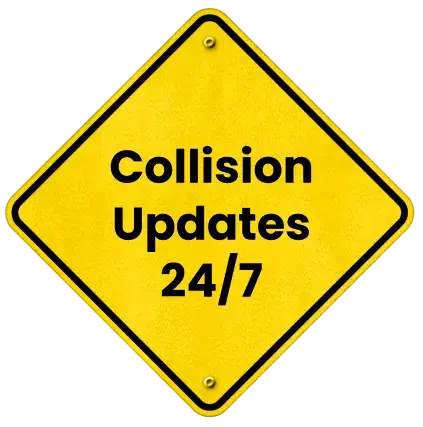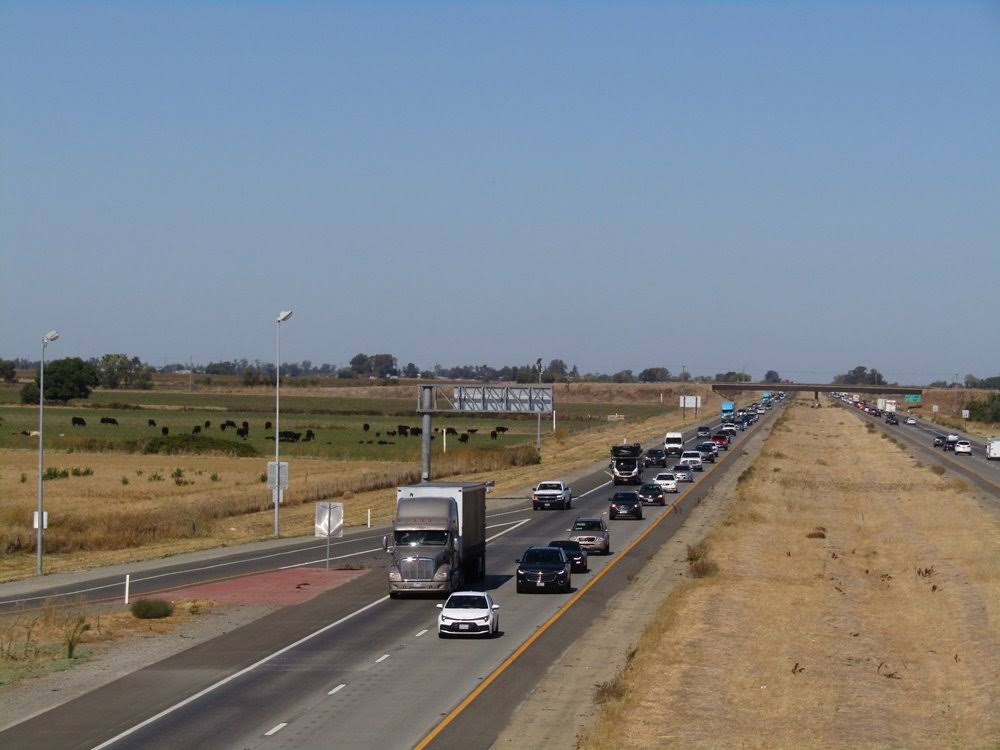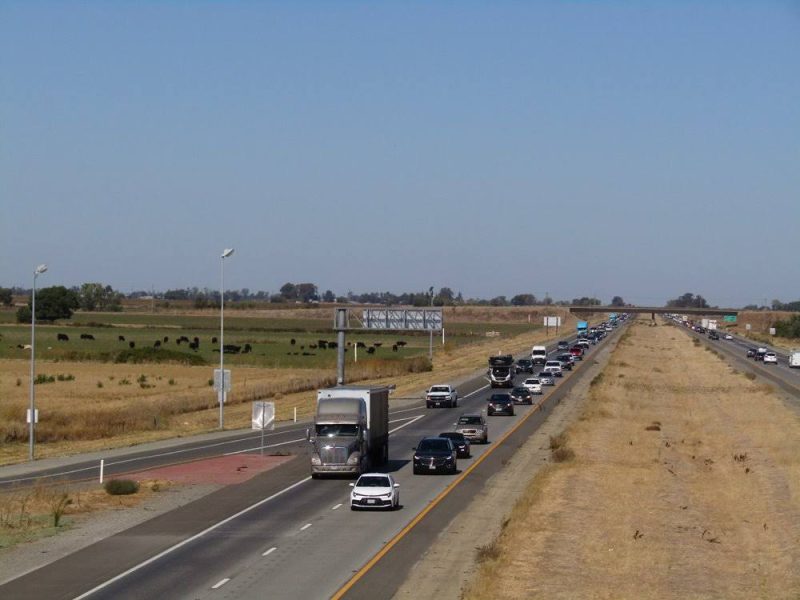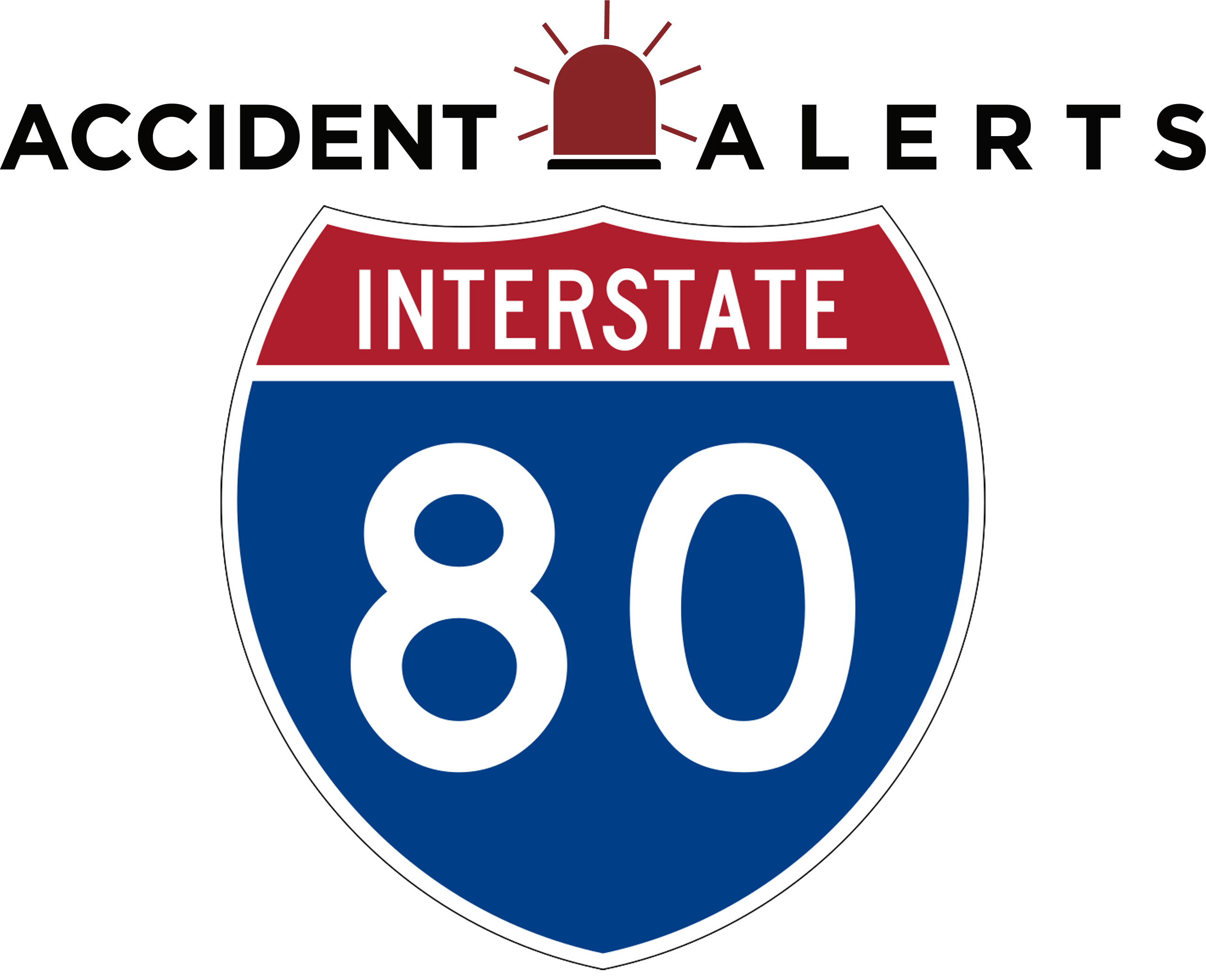
Wildlife Collisions on I-80


Interstate 80 (I-80) is one of the nation’s longest and busiest transcontinental highways, stretching from San Francisco, California, to Teaneck, New Jersey. While it connects major cities and serves as a vital commercial route, much of I-80 passes through rural landscapes, open plains, national forests, and mountainous terrain. These regions are home to diverse wildlife, and animals frequently cross the highway, particularly during migration and mating seasons.
Because of these environments, the risk of wildlife collisions on I-80 is much higher than on many other major routes. Deer, elk, and other large animals are common along the corridor, especially in states like Wyoming, Utah, and Nevada, where long stretches of the highway run through protected habitats and wildlife migration zones.
Drivers traveling along I-80 should remain vigilant in these areas. Paying attention to wildlife crossing signs, slowing down in high-risk zones, and using high beams when safe can help spot animals before they enter the roadway. If one appears suddenly, it’s best to brake firmly while keeping control of the vehicle rather than swerving, which can lead to more severe crashes.
Travelers should also remember that wildlife activity peaks during dawn, dusk, and seasonal migration periods. By staying alert, driving cautiously, and knowing what to do in the event of a collision, motorists can greatly reduce their risk of an animal-related crash while safely enjoying the scenic stretches of Interstate 80.
Wildlife Risk Zones Along I-80
Each state along I-80 presents distinct wildlife hazards. Understanding these risk zones can help drivers stay alert and reduce the likelihood of a collision.
-

Utah and Wyoming: Elk and Mule Deer Crossings
In Utah and Wyoming, elk collisions on Interstate 80 are particularly dangerous. The stretch between Evanston, Wyoming, and Park City, Utah, is a known migration corridor where wildlife fencing and crossing structures are still being developed to reduce incidents.
-
Nebraska: Open Range Hazards
As I-80 crosses Nebraska, the landscape opens up into wide plains. While visibility is good, animals such as antelope and deer still frequently cross the highway, particularly near rivers and wooded areas.
-
Pennsylvania: Dense Forests and Deer Populations
Pennsylvania remains one of the leading states for deer-related crashes, particularly along the I-80 corridor. These incidents peak during the fall rut season, when deer activity increases dramatically. According to the Pennsylvania Department of Transportation (PennDOT), Crawford, Erie, Forest, Mercer, Venango, and Warren counties together recorded more than 2,500 deer-related crashes over the past five years, resulting in nearly 500 injuries and eight fatalities.
Best Tactics to Avoid Wildlife Collisions on I-80
While not every animal-related crash can be avoided, drivers can take several effective precautions to reduce their risk on rural and mountainous stretches of I-80. One of the most important steps is to reduce speed in high-risk areas. Wildlife zones are often marked by yellow warning signs, and slowing down by even 10 miles per hour can significantly increase reaction time and stopping distance.
Staying alert during peak activity hours is also crucial. Most deer-related crashes occur between 5 a.m. and 8 a.m., and again from 5 p.m. to 10 p.m. When driving during these times, use high beams when no other vehicles are approaching, and watch carefully for the reflection of animal eyes along the roadside.
If an animal suddenly enters the roadway, it’s essential to avoid swerving. Instead, brake firmly while maintaining control of your lane. Sudden swerves can lead to more severe crashes, especially if they result in a collision with another vehicle or cause the driver to veer off the road.
When possible, travel in the center lane through areas with high wildlife activity. This provides extra distance from both shoulders, giving drivers more time to react if an animal darts into the road. Additionally, pay attention to seasonal migration alerts. Wildlife movement increases during certain times of the year, and state transportation agencies often post warnings or advisories about elevated activity.
By staying cautious, slowing down, and remaining aware of their surroundings, drivers can greatly reduce the likelihood of wildlife collisions along I-80 and help ensure safer travel through these rural regions.
Insurance Coverage After a Wildlife Collision
Even a minor collision with an animal can lead to costly repairs. Understanding your insurance coverage before an accident occurs can save you frustration and unexpected expenses later.
Standard liability policies do not typically cover damage caused by wildlife. Comprehensive insurance, however, often does. This coverage helps pay for repairs or total loss if your vehicle is damaged by hitting an animal like a deer or elk.
When filing a claim for a deer accident on I-80, remember that you’ll likely pay your deductible before your insurer covers the remaining repair costs. Repeated wildlife claims can also affect your future premiums, so documenting the incident accurately is crucial.
Many policies include optional towing or rental car reimbursement coverage. Because elk collisions on Interstate 80 often disable vehicles, these benefits can be invaluable.
What to Do After a Wildlife Crash
Knowing the right steps to take immediately after a collision can help protect your safety and strengthen any insurance or legal claims. First, move your vehicle out of traffic and turn on your hazard lights to reduce the risk of a secondary accident. Once you are in a safe location, call 911 to report the crash. Having law enforcement on the scene ensures the incident is officially documented, traffic is directed safely, and an official accident report is filed.
While waiting for responders, take photos of the scene. Capture damage to all vehicles involved, the road conditions, and any visible debris or markings. If the accident involved an animal, it’s important not to approach or attempt to move it. Wait for police or animal control to handle the situation. After the immediate scene is managed, don’t overlook your own well-being. Even in low-speed collisions, injuries like whiplash or internal trauma can occur. If you feel sore, dizzy, or disoriented, seek medical attention as soon as possible to ensure your health is protected.
How a Car Accident Lawyer Can Help After a Wildlife Collision
Collisions involving wildlife may seem like “no-fault” events, but that isn’t always the case. Poor road maintenance, missing warning signs, or negligent fleet management can all play a role in an I-80 wildlife crash. An experienced Car Accident Lawyer can help you determine liability, navigate insurance disputes, and ensure you receive fair compensation.
Attorneys can review police reports, witness statements, and roadway conditions to identify contributing factors.
Insurance companies may try to minimize payouts after a deer accident on I-80, particularly if the vehicle was part of a commercial operation or shared fleet.
Beyond the immediate claim, an attorney can connect you with vehicle repair resources, medical care providers, and evidence specialists to support your case.
The Importance of Contacting an I-80 Car Accident Lawyer
Driving across America’s heartland and mountain corridors offers breathtaking scenery, from open plains to forested slopes—but these same landscapes bring real dangers for motorists. Sudden wildlife crossings, limited visibility, and unpredictable terrain can turn a peaceful drive into a devastating accident in seconds
If you’ve been injured in a wildlife-related crash on I-80, you don’t have to face the aftermath alone. We can connect you with an I-80 personal injury lawyer today who understands the unique challenges of these cases and can provide the guidance, resources, and compassionate support you need to recover and move forward with confidence.
